PATTERN 37 WEBBING.
|
In the early 1930s it was decided to replace the 1908 pattern webbing as it was thought that in the next war infantrymen would be part of a motorized and mechanized army rather than fighting in trenchers.
Although what was to become pattern 37 was approved by the army it was deferred as the army was looking at a new light machine gun the bren gun. A new basic pouch was designed To suit.
1937 pattern webbing was then excepted in June 1938. |
| |
Basic set of pattern 37 webbing in battle order Except for the water bottle which would have been carried in the haversack/small pack.
In marching order the water bottle would be carried as you see it also the haversack/small pack would be worn in the same way suspended from the brace ends and the valise/large pack would be worn on the back.
All are war time dated.The left hand picture shows the positions of the basic pouches and belt.
The picture in the center shows the positions of the haversack/small pack and entrenching tool carrier. |
| |
The left hand picture Showing positions of the
bayonet frog and bayonet. The picture in the center shows the positions of the water bottle carrier and water bottle[during marching order].
Also note the L straps on both right hand pictures attached to the haversack/small pack and how they are attached to the basic pouches at the top .
|
|
|
Patt 37 Valise/large pack front and back dated 1943.
Which would be worn when using marching order. Its actually a carry over from the 1908 pattern webbing so are the supporting straps shown in the third picture although this way of using the supporting straps as shoulder straps was only used by the Royal Armoured corps and Royal signals personal with those units.
The infantry when using marching order used the shoulder/L straps Taken off the Haversack/small pack which then were used with the Valise/large pack and the supporting straps were then worn over the front of the Valise/large pack [see forth picture]. |
|
|
Patt 37 Haversack/small pack has three internal compartments one large two small.
The two smaller ones are designed to carry the water bottle and mess tins as shown in the third picture. The second picture shows the detachable L straps in more detail.
There were also different variations in the wide Haversack/small pack attachments tabs during the war mainly for economy reasons.
|
|
|
Basic pouch's which could carry two bren gun magazines or 50 rounds of 303 ammunition in charges and bandoleers or 5.5in ammunition for the boys anti-tank, 2in mortar bombs, hand and rifle grenades.
There are three marks of p37 basic pouch's. The only difference between the MK.1 and MK.11 is that the belt hooks are lower down on the MK.11 so the pouch rides higher up on the belt.The MK.111 pouch's are approximately one inch deeper so it could accommodate sten gun magazines
also late on in the war they were made with quick release closures. The ones in the pictures are all MK.111s the one on its own is the 1950s version with the black metal work. Note the quick release closures. |
|
Patt 37 utility pouches dated 1940.
Utility pouches gave extra carrying capacity to supplement what could be held in the basic pouches they are slightly larger than the basic pouches
and could carry three Bren gun magazines or two boys anti tank magazines or three 2 inch mortar bombs plus other items.
A yoke is attached to the buckles at the top of the pouches which then goes over the shoulder so one pouch is on the chest and the other is on the back
[see third and fourth pictures] there is a narrow strap sown to the bottom of one of the pouches at the back which threads through a loop on the back of the other pouch
which then goes around the waist and fastened with a brass buckle. |
|
Cartridge carriers for use by non infantry troop's.
Each carrier has two pockets with flaps and two studs so the flaps can be closed in two positions.
Each pocket is divided by a partition into two compartments each holding one clip of 5 rounds so forty rounds altogether.
The second and third picture show the position of the cartridge carriers and how they are attached.
|
|
|
Patt 37 Motor transport drivers pouch dated 1944. Basic pouch for M.T. drivers similar in size and construction to the M.K.111 basic pouch except it has a belt loop on the back instead of the metal belt attachments. The fourth picture is actually of a pattern 44 M.T. drivers pouch but they were worn in the same way. It could be worn on either side in accordance with the type of vehicle being driven. |
|
|
The pattern 37 waist belts came in three sizes normal, large, extra large.
The metal work was mainly brass but there was a war time economy version using web loops in the second picture also note the 1950s version with the black metal work in the third picture.
Troops were issued a second belt as a walking out belt were they very often cut off the buckles on the back to make them look smarter.
The internal loops can differ with different makers some only have stitched loops part way down the belt on either side instead of the full length as you mostly see.
|
|
|
Pattern 37 braces come in pairs of left and right the left hand one has the loop which the right one goes through they come in two sizes normal and long.
There are variations in the construction methods used by different manufacturers.
The third picture shows how the braces fit to the back of the belt.
|
|
|
The main water bottle used with pattern 37 was the green enamelled MK.V11
which was introduced in 1939 although the blue enamelled MK.V1 of WW1 was still used presumably
they were replaced with the more modern MK.V11s as they wore out. The RAF was issued a blue enamelled MK.V11
with khaki felt in 1940[see third picture] from what I can work out from different sources the blue felt version of the MK.V11
shown in the fourth picture was not introduced in the RAF till post war? The carrier with this one is dated 1952,
If anybody can add to that I would be interested to hear from them. The Main differences between the MK.V1s
and MK.V11s are the MK.V11 has a metal loop welded to the neck were it meets the body of the bottle the cork cord is attached to this
[See picture number five]. The MK.V1 does not have this loop and the cord is stitched directly to the felt
also the cord is longer on the MK.V1.
CARRIERS. The pattern 37 cradle carrier was manufactured until 1940 when the sleeve design was introduced there are two versions the long and short sleeve the MK.V11 bottle in the picture is in a short sleeve with the long sleeve next to it. Interestingly they seem to have gone back to the cradle type post war note the 1950s version on the right in the second picture with the black metal work.
|
|
|
|
The pattern 37 entrenching tool was not introduced until 1941 before this the pattern39 entrenching tool was used which was basically a short Handle spade which was found to be unsuitable as its length restricted easy movement so the old 1908 pattern entrenching tool with a modified carrier was reintroduced.
There were two marks of wooden handles used with the pattern 37 entrenching tool the original 08 pattern and the MK.11 shown in the picture with a metal fitting for the no.4 spike bayonet it was mainly used as a mine prodder. It was introduced in June 1944.
A further modification was made to the carrier in may 1945 which consisted of a strap and press stud fastener fitted to the side of the carrier to stop the wooden handle falling out of its loops the carrier in the picture is the first style of carrier without the side strap.
The carrier was not just used to carry the entrenching tool very often rifle cleaning equipment and dubbin tin were also carried at the same time[ see gas masks and associated equipment for dubbin tin] . All entrenching items in the pictures are dated 1944.
|
|
Patt 37 brace attachments dated 1941.
Brace attachments are issued for the use of those not equipped with basic pouches
or with only one basic pouch such as Officers, Warrant Officers, N.C.Os. And Specialists.
|
|
Patt 37 Officers haversack dated 1940. The officers haversack has a partition inside creating two large pockets.
On the face of the bag under the flap there are two smaller pockets for pencils, protractor, dividers, etc.
A small buckle is fitted each side for attachment to the ends of the braces at the side of the equipment [see third picture]
and a loop is provided at the back near the top to enable the haversack to be carried by hand when desired.
Patt 37 binoculars case dated 1945 plus binoculars dated 1945.
On the back of the case it has two double hooks for attachment to the waist belt as well as a hanger hook
to attach to the compass pouch when that article is to be carried above the binocular case [see third picture] or alternatively
a shoulder strap can be added using the buckles on either side .
Patt 37 pistol ammunition pouch dated 1942.
On the back it has two double hooks for attaching to the belt also two webbing loops top and bottom. The top one is for the brace attachment to slide through and the bottom one excepts the horizontal hook on the pistol case.
The third picture of the officer shows one possible position for the pouch on the right of the picture above the holster. |
Patt 37 compass pouch dated 1945.Plus compass dated 1941.
It is identical to the ammunition pouch from the outside the only differences are the compass pouch has extra padding and a stiffener to protect the compass. |
Patt 37 pistol holster dated 1943. For use with the standard 38inch revolver.
Note the reinforced bottom were there is also a drainage hole. On the back of the holster it has two double hooks for attachment to the waist belt
as well as a horizontal hook to attach to the bottom loop of the ammunition pouch when that article is to be carried above the pistol case.
The third picture shows another possible combination of wearing the pistol case and ammunition pouch.
Patt 37 Royal armored corps holster Mk.11.Introduced in 1942 to replace the MK.1 for comfort reasons the MK.1 being longer [see third picture for a M.K.1]
Designed for the 38" Revolver it also carried a pistol cleaning rod as well as 6 replacement cartridges.
This one is dated 1955 and it has the typical 1950's blackened metal fittings.
|
|
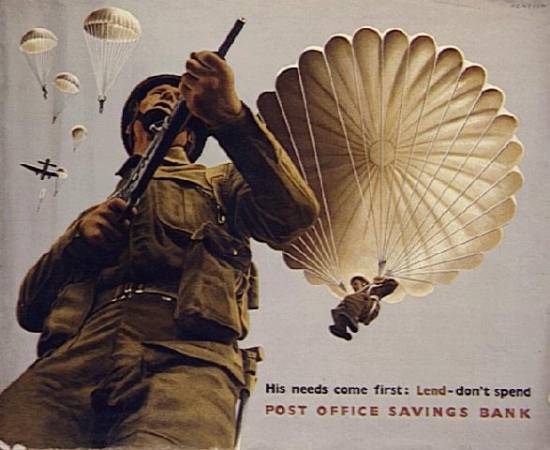

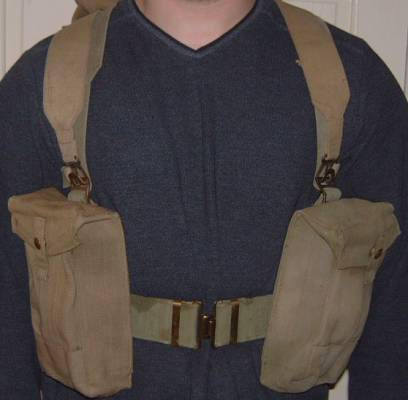
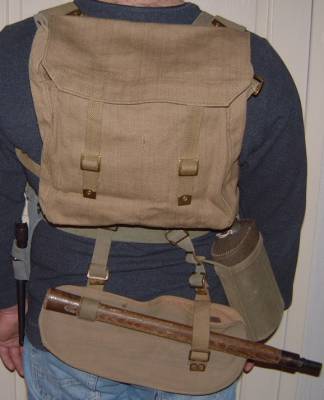

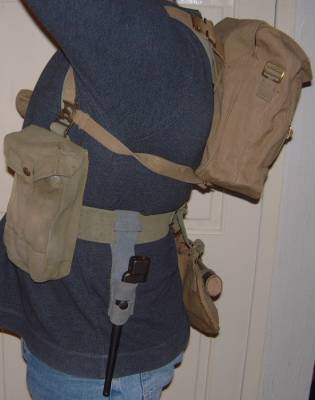


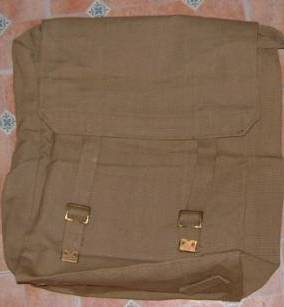
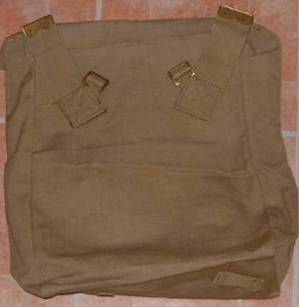
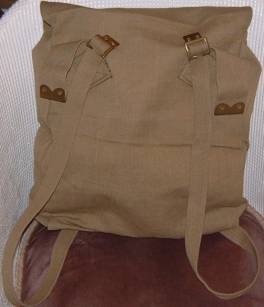
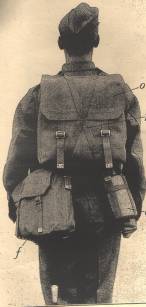
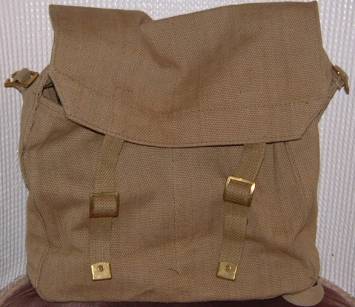
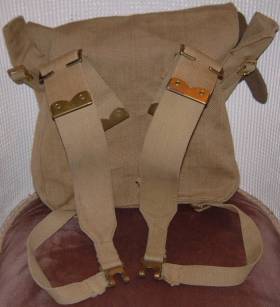

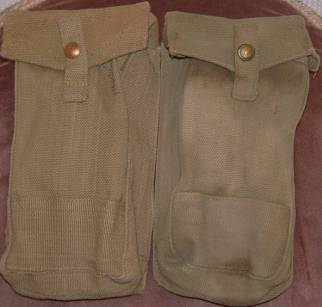

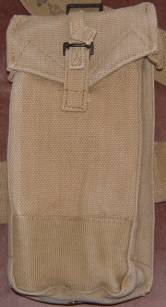
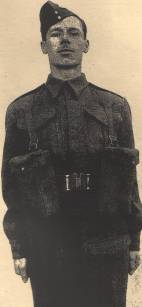
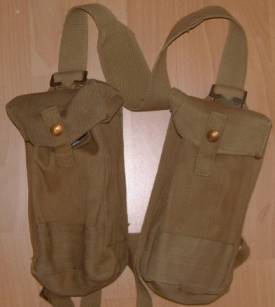
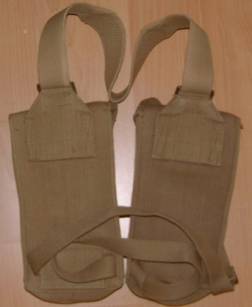
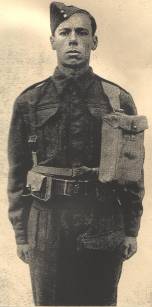
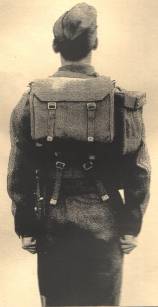
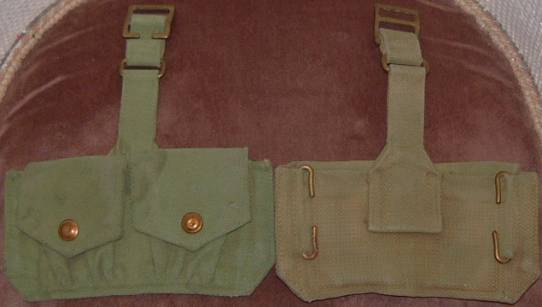
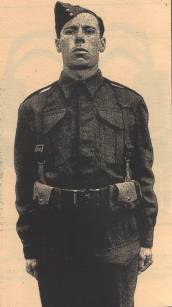
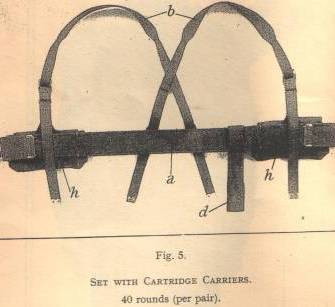
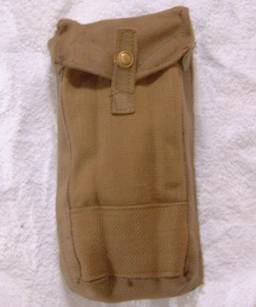
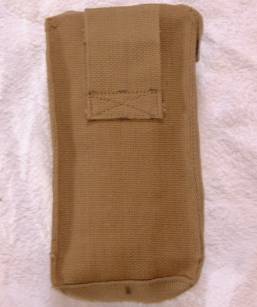
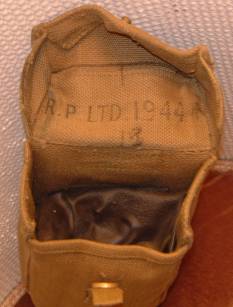

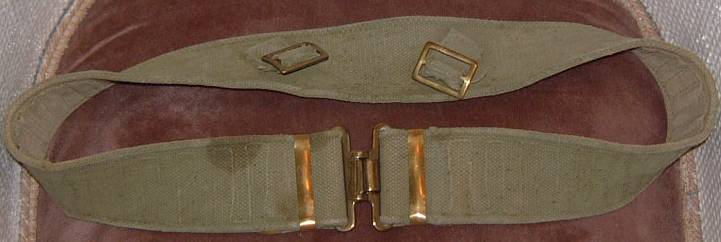
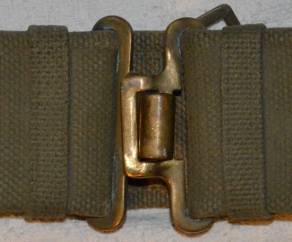
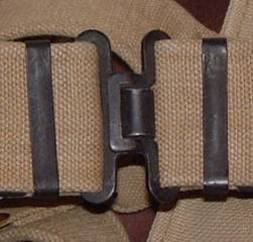
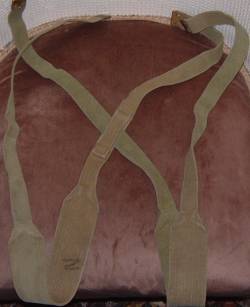
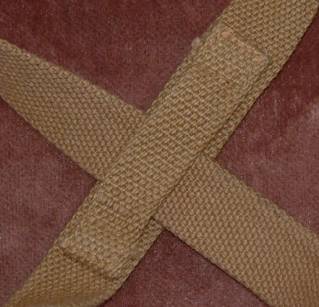



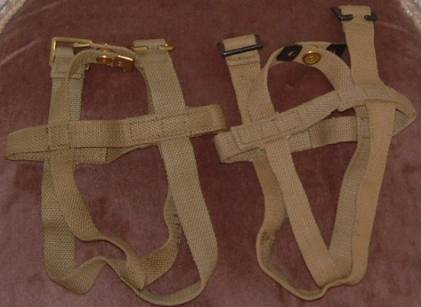

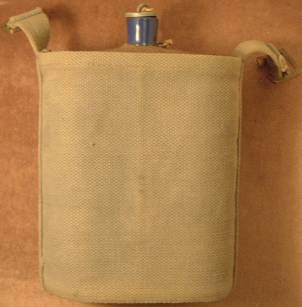
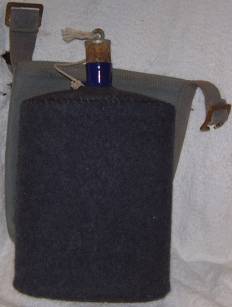
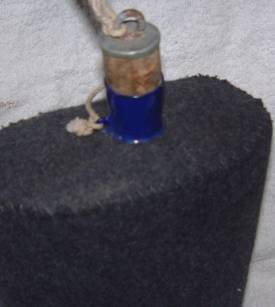


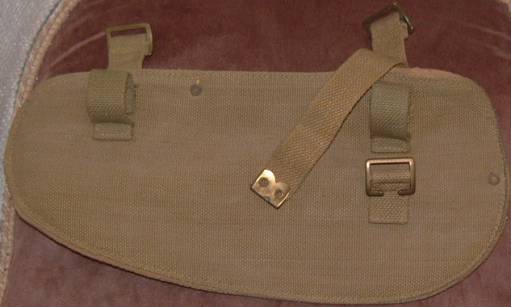
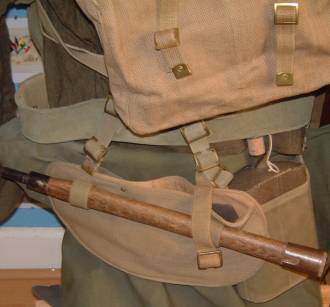

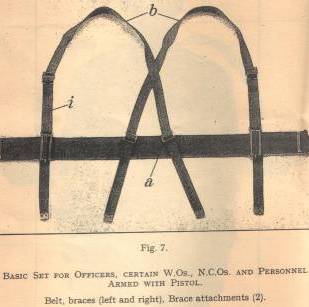
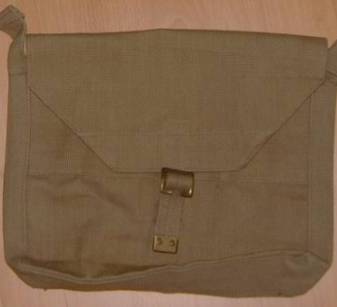

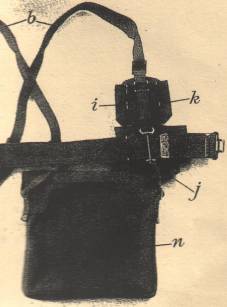

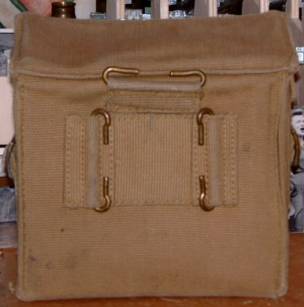
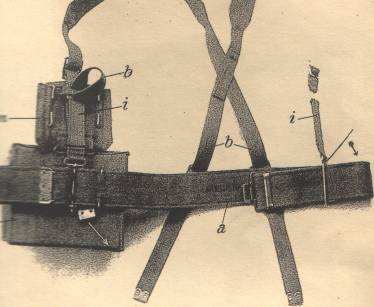
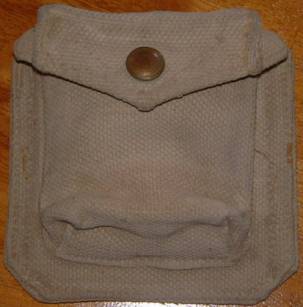
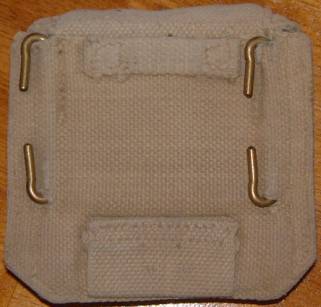
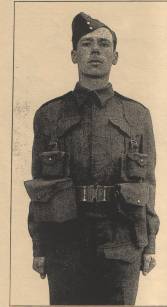

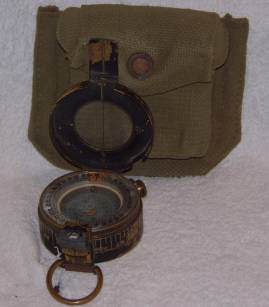
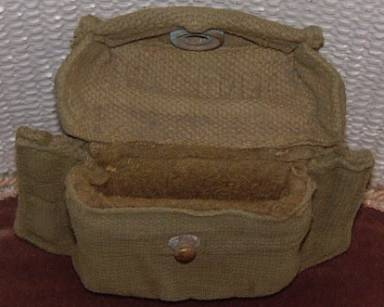
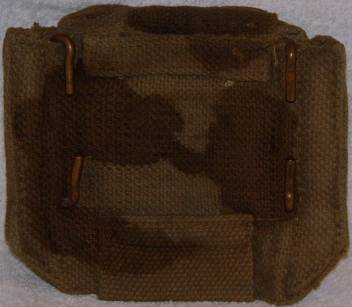
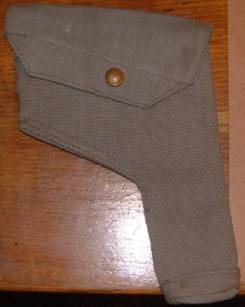

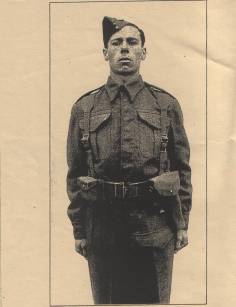
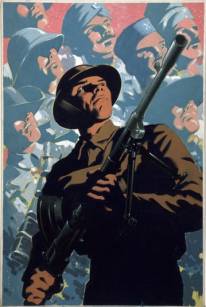
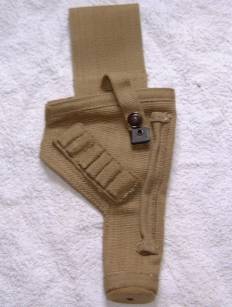

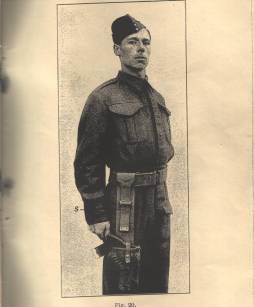

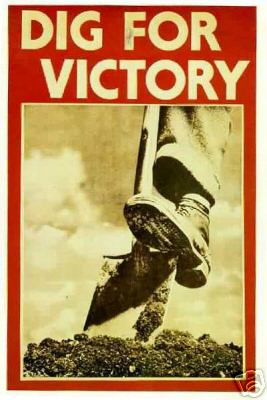 BACK TO MILITARIA EQUIPMENT.
BACK TO MILITARIA EQUIPMENT.